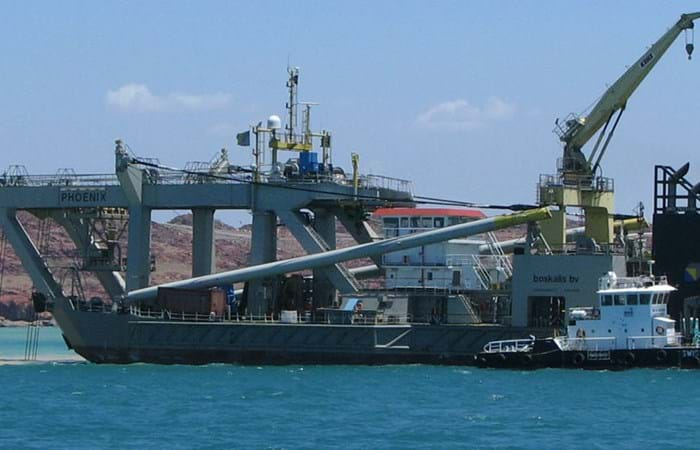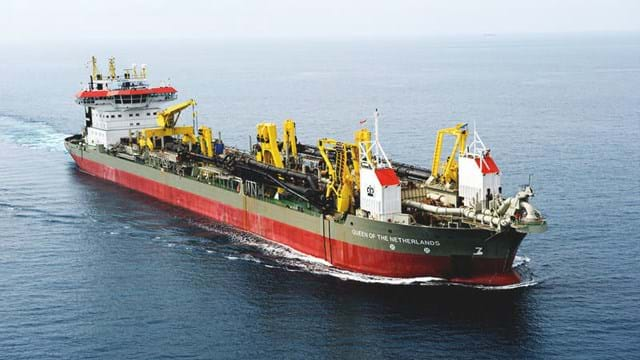The Pluto LNG project is located about 190 km northwest of the coastal town Karratha, in the Northern Carnarvon Basin, Western Australia. The project is a joint venture between Woodside Burrup Pty. Ltd., the operator, with a 90% interest, and Tokyo Gas (5%) and Kansai Electric (5%). The A$12 bn project will process gas from the Pluto and neighboring Xena gasfields.
The project was executed in two phases: first the berth pocket, part of the turning basin and two trenches were excavated to allow the construction of the new LNG jetty; then part of the turning basin and two trenches, which traverse the existing NWSV LNG shipping channel, were dredged. Dredging the two trenches early in the program was required since shipping in the NWSV LNG channel was scheduled to increase in the near future, decreasing the time available for dredging. Work took place from late November 2007 through early May 2008 with the removal of 2,100,000 m3. In the second phase, from 1 September, 2009 through July 2010, the remainder of the turning basin and the shipping channel were dredged and 5,600,000 m3 were removed.

